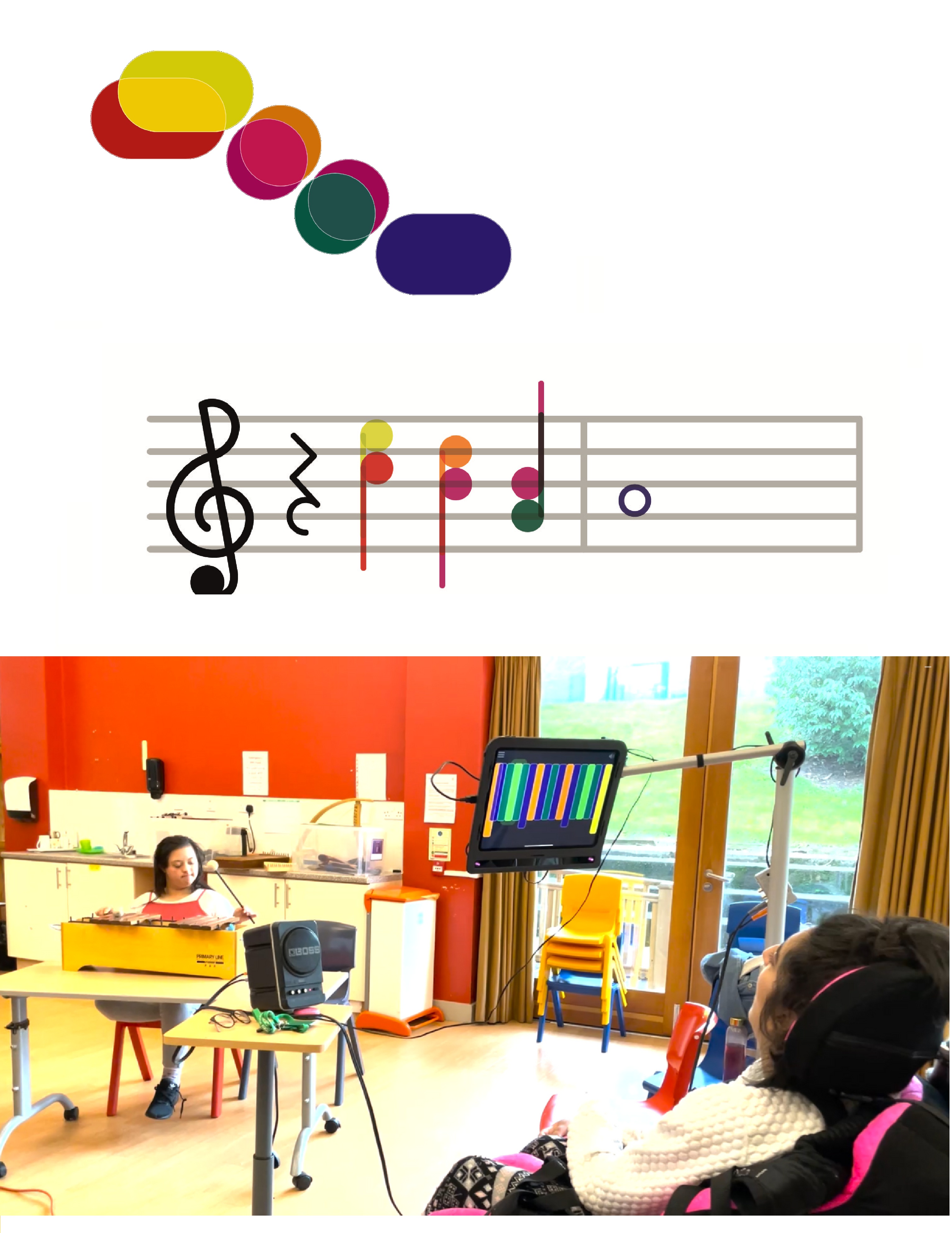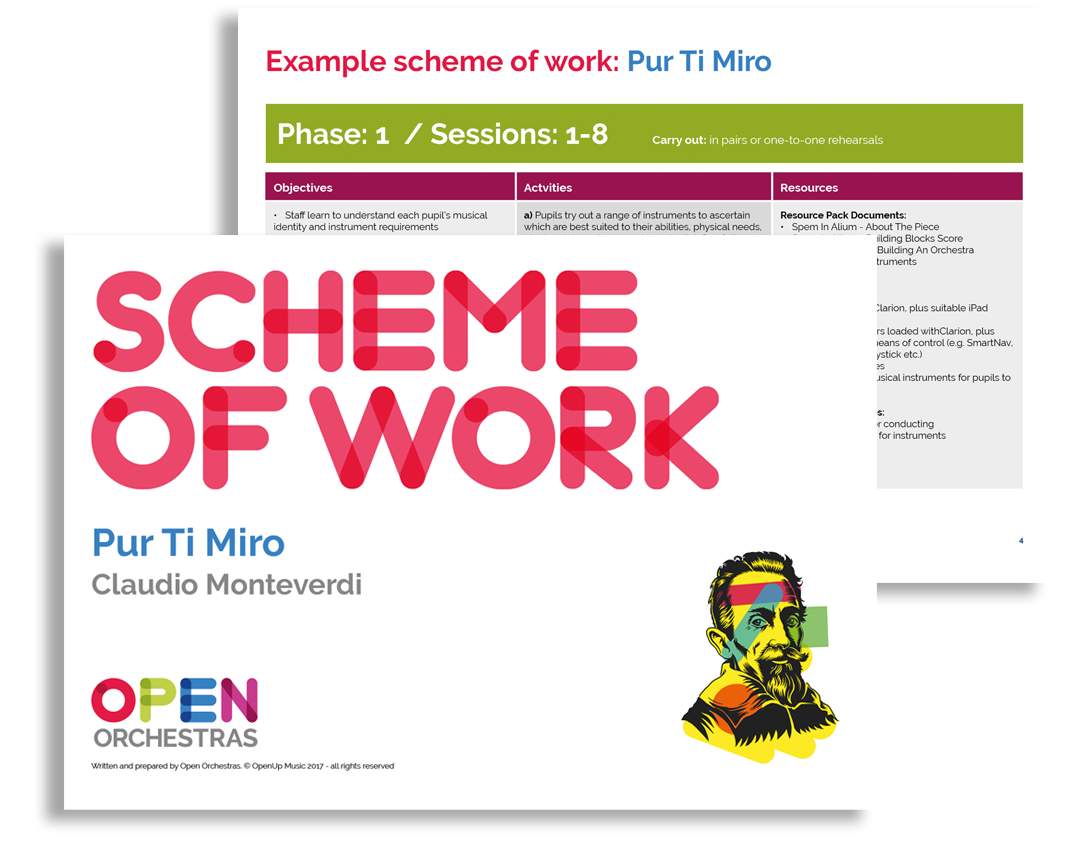Overview
“You’re developing your practice by building your orchestra around the needs of your musicians, rather than having to adapt to instruments and repertoire as traditional orchestras do.
The pieces we provide are broken down into musical building blocks that can be reimagined into whatever your students want it to be. No two orchestras are the same, playing music that is consistently striking in its originality”
Jonathan Westrup, Open Orchestras Programme Manager
Let’s settle the score
For many young disabled people, Open Orchestras will be their first opportunity to play an instrument. To start with, they’ll get to explore which instruments might work best for them!
Then through weekly music sessions, you’ll support them to play music together, independently, expressively and in real-time. Of course, not all your students will access music in the same way. Some young people might follow a simple coloured score, some will improvise. Some will play and learn their parts from memory, while others will participate in a more random fashion.
That’s why Open Orchestras repertoire comes with Clarion patterns, musical arrangement ideas, coloured notation guides and conventional musical scores. Your students can explore and re-imagine the music, whatever their needs and access requirements.
Our growing library of accessible music includes pieces adapted from Florence Price, Beethoven, Pachelbel and Monteverdi, but also thematic resources. ‘The River’ and ‘Sea Sketches’ can be used as a starting point for field trips, encouraging your orchestra members to connect with the music through their personal experiences and interpretations.
Each piece of music has been expertly distilled to its essential ‘building blocks’, that can be put back together in any number of ways to meet each young person’s needs, and express their musical identities.

Schemes of Work
Every piece of Open Orchestras repertoire is accompanied by an example scheme of work, supporting your staff to timetable their musical activities over the course of the year.
Schemes of work follow a phased approach to bringing together your ensemble, building up from working in pairs to small groups to the full orchestra.
For each piece of musical repertoire, schemes of work provide a starting point from which to plan accessible musical activities in response to the diverse needs and musical identities of each pupil.

